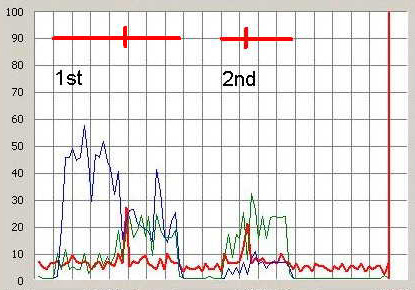The Standards Payoff
Eric A. Meyer
Netscape Communications
The Standards Payoff
Standards Are Cool, But...
- Okay, so everyone wants you to ditch tables and "use standards"
- What's in it for you, economically speaking?
- Conversion/redesign process will take time and energy
- Obviously, there's no point if the cost outweighs the benefit
Standards-Oriented Design
- Standards-oriented design markup is easier to maintain
- Updates and redesigns are much simpler and don't require a return to Square One
- Markup supporting this type of design is more lean
- Leaner markup means smaller pages, which means improved performance all around
What About The Hindmost?
- Okay, so obviously ancient browsers can't do everything today's browsers can
- First step: realize that "looks the same in all browsers" is impossible (and always was)
- Look for ways to deliver similar experiences without crippling yourself or your users
- Take a cost-benefit approach to your design decisions
Example: Fox Searchlight
- Created by Jeffrey Zeldman and Hillman Curtis
- Uses "transitional design" and Flash
- Greatly improved download and layout speed
- Changes to layout and appearance are much easier
Example: OfficeMax
- List of over 50 links on left side of page
- Every link is preceded by a blue arrow image
- Converting to an unordered list using CSS to replace bullets with images would save about 5KB of markup
- Is the bandwidth cost worth the benefit of a more consistent look?
Example: ESPN
- In March 2003, ESPN's home page moved to a non-table layout
- ESPN.com serves between one half and one billion page views every month
- Initial page-weight reduction was just over 50KB
- Doing the math, we discover there's a pretty clear benefit
Performance Profiling
- Using the Windows Performance application, we can actually see how pages do
- Tests were run on variants of a typical "portal"-type page
- 56Kb dialup connection used for testing
- Cache completely cleared before each test; page loaded and then re-loaded to compare uncached with cached performance
Profile: Initial Page
Profile: Whitespace Stripped
Profile: Simplified Structure
Profile: Non-Table Layout
Easing the Bytes
- Obviously, smaller pages mean faster pages
- They also mean reduced server load and faster servers
- Even on broadband, the faster responses pay off
- Happier users mean more loyal users and more return business
Accessibility Wins
- Documents with strong markup structures are almost always more accessible
- Screen readers do better with structural markup, and can use things like headings to improve user experience
- If you remove your CSS and the page looks like a 1994-era masterpiece, you're golden!
- "Skip to" links can provide even more help, and be hidden from visual browsers
Multimedium Support
- With standards-oriented design, supporting other media becomes a snap
- Aural medium support falls out of the accessibility wins
- Supporting cell phones and PDAs is mostly handled simply by being accessible
- Creating print-medium styles is easy, and if you've planned ahead you can get professional-looking printouts
- You can even create slideshows, given the right tools
Example: Wired
- In October 2002, wired.com redesigned using no tables at all
- CSS positioning is used for basic layout
- Daily color themes are handled with stylesheet changes
- Turn off CSS (or visit with a non-CSS browser) and you get just the content
- Cellphone and properly written handheld browsers get the non-CSS version
Example: DevEdge
- In February 2003, DevEdge redesigned using no tables at all
- CSS positioning is used for layout
- User-selectable themes driven by stylesheets
- Printer-friendly pages driven by medium-specific stylesheet, and has extra features for advanced browsers
In Conclusion
- Reduce page weight!
- The stronger and leaner your structure, the better for all your visitors
- Accessibility and multimedium support are much easier with standards-oriented design
- Reduced maintenance and redesign costs provide extra long-term benefits
- Ancient browsers need not be completely frozen out




